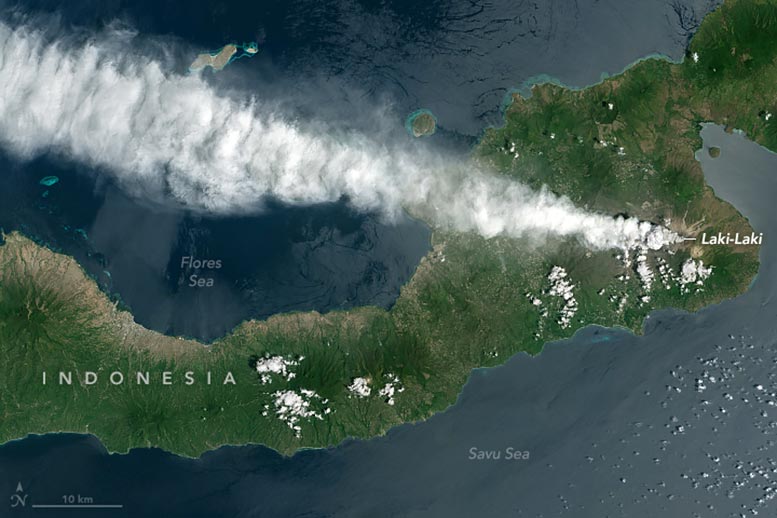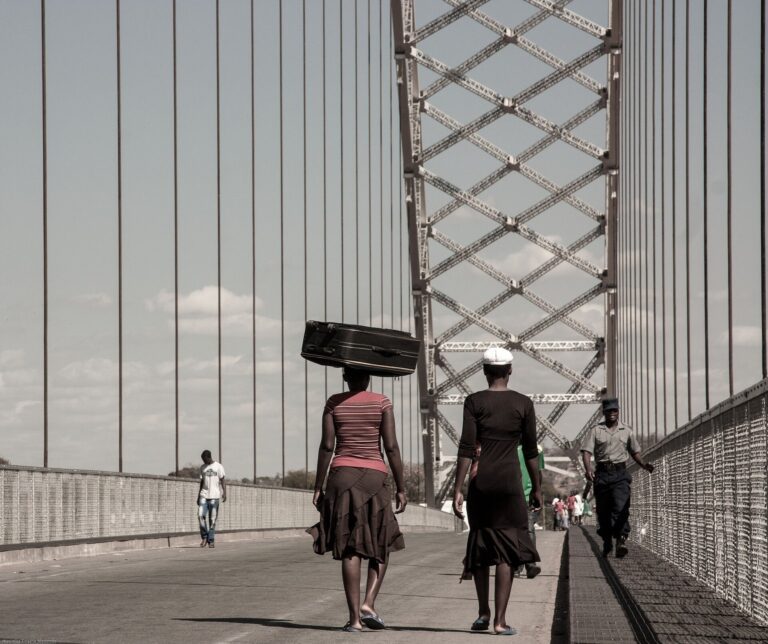

Mount Lewotobi Laki-Laki in Indonesia erupted in late 2023, culminating in severe eruptions by November 2024 that impacted air travel significantly with towering ash plumes visible via satellite. The volcanic activity led to extensive flight cancellations and efforts to enhance air travel safety around volcanic ash.
After nearly two decades of dormancy, Mount Lewotobi Laki-Laki, a volcano on Indonesia’s Flores Island, reawakened with eruptions in December 2023. Activity intensified significantly in November 2024, with a series of explosive events that unleashed deadly pyroclastic flows, blanketed the region in ash, and sent towering ash plumes high into the atmosphere, severely disrupting air travel.
Satellite Observations and Volcanic Activity
On November 13, 2024, the OLI-2 (Operational Land Imager-2) on Landsat 9 captured an image of a volcanic plume drifting westward from Mount Lewotobi Laki-Laki. That same day, Indonesia’s Volcanology and Geological Hazard Mitigation Center (PVMBG) reported plume heights of 1,200 meters (3,900 feet). These eruptions followed even more powerful events earlier in the month. On November 7, an eruption sent ash soaring to 17,000 meters (56,000 feet), and another on November 9 reached 15,000 meters (49,000 feet), as reported by the Darwin Volcanic Ash Advisory Center (VAAC).
Aviation Risks and Response to Ash Plumes
The MODIS (Moderate Resolution Imaging Spectroradiometer) on NASA’s Aqua satellite sensor captured an image (below) of the remnants of one of these high-flying, widely dispersed ash plumes over Flores on November 9. The aviation community tracks the movement of volcanic ash closely because it can cause damage to airplane windshields, airframes, wings, and engine components. At times, ash has caused engine failure. Jets generally cruise at heights above 10,000 meters, so ash plumes above this altitude pose a particular threat.

Enhancing Aviation Safety Through Collaboration
After the eruption on November 4, authorities elevated the aviation color code from orange to red, the highest on the scale. Airlines canceled more than 90 flights on November 13 alone and dozens of other flights on prior days due to ash, according to local news reports. Cancellations have affected both domestic and international flights, including flights into and out of Bali, an island popular among international travelers. Several airports temporarily closed after the November 4 eruption, though some had partially reopened by November 14, according to the Jakarta Globe.
Past research into aviation and volcanic hazards ranks Indonesia’s airports as the world’s third most vulnerable to volcanic activity. This was based on the number of active volcanoes that have caused problems in the past, the number of airports affected, and the total number of ash-related impacts. Other countries with high risk include the United States, Ecuador, Papua New Guinea, Italy, New Zealand, the Philippines, Mexico, Japan, and the United Kingdom.
An ongoing collaboration between the NASA Disasters program and several volcanic ash advisory centers, which includes a series of workshops, aims to develop safer and more efficient flight redirects around volcanic plumes using information collected by NASA satellites.
NASA Earth Observatory images by Michala Garrison, using Landsat data from the U.S. Geological Survey and MODIS data from NASA EOSDIS LANCE and GIBS/Worldview.





